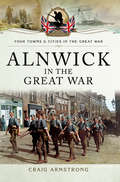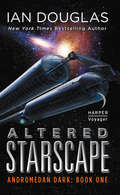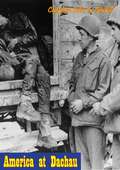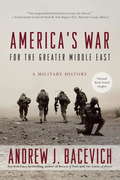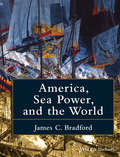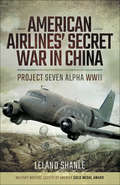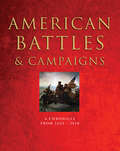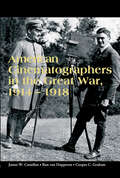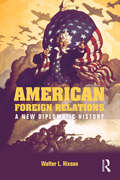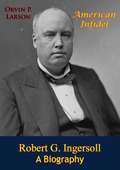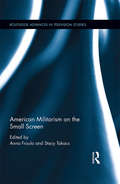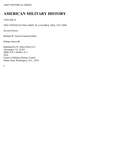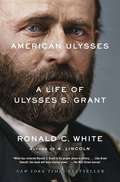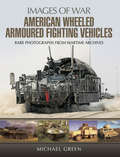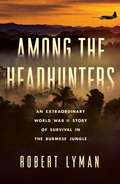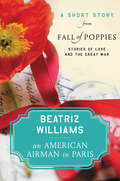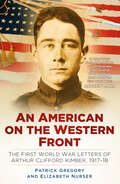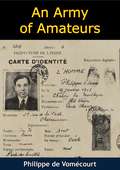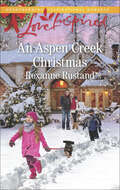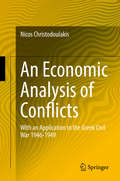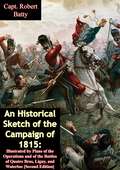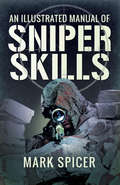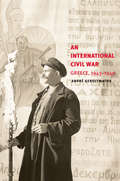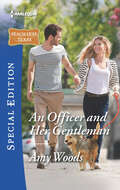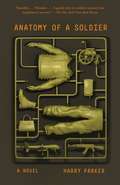- Table View
- List View
Alnwick in the Great War
by Craig ArmstrongAs a market town and one of the seats of government of the county authority, Alnwick played a key role in the coordination of Northumberlands war effort. With a wide rural hinterland, the town was considerably important in the production and dispersal of food, which was vital to the war effort. As the home of the Duke of Northumberland, the town had a hugely influential role in the overall Northumbrian war effort from civilian affairs to military recruitment.The town shared a proud tradition of military service with the wider region, and this was reflected in the huge numbers of Alnwick men and women who came forward for service in the military or in roles such as nursing. The town was a regional recruitment centre and hosted its own unit of the 1/7th (Territorial) Battalion, Northumberland Fusiliers, as well as other military units. From 1915, Alnwick was also one of the largest infantry training bases in the north of England. Many of the locally raised Pals Battalions, which were raised in the north, received their training here. For those left behind in Alnwick, the war was a time of worry and hardship, however others saw the business opportunities. This book includes accounts of the struggle that local families faced in coping with rising wartime prices, longer working hours and endless worry, sometimes in the face of accusations of drunkenness or idleness from the authorities and unfair criticism of the rural districts recruiting record.Despite these hardships, the people of Alnwick provided incredible charitable support right up until the end of the war, in addition to their normal efforts. Several military hospitals were set up in the town and surrounding area, with the training base later becoming a recuperation base for injured soldiers. These momentous efforts are explained throughout this compelling book, which is a testimony to the bravery, self-sacrifice and determination of the people of Alnwick during the Great War.
Altered Starscape: Book One (Andromedan Dark #2)
by Ian DouglasGalaxies collide in a thrilling new series from bestselling author Ian Douglas, as the last humans in the universe face off against a new threat2162. Thirty-eight years after first contact, Lord Commander Grayson St. Clair leads the Tellus Ad Astra on an unprecedented expedition to the Galactic Core, carrying more than a million scientists, diplomats, soldiers, and AIs. Despite his reservations about their alien hosts, St. Clair is deeply committed to his people--especially after they're sucked into a black hole and spat out four billion years in the future.Civilizations have risen and fallen. The Andromeda Galaxy is drifting into the Milky Way. And Earth is most certainly a distant memory. All that matters now is survival. But as the ship's Marines search for allies amid ancient ruins and strange new planetary structures, St. Clair must wrap his mind around an enemy capable of harnessing a weapon of incomprehensible power: space itself.
America at Dachau
by Chaplain John G. GaskillHarrowing account of U.S. Army chaplain John G. Gaskill of what he witnessed in Dachau.For three months, Gaskill ministered to liberated inmates and imprisoned SS soldiers at Dachau. Every evening for a month, Gaskill and other clergymen held mass funerals for those who died from starvation and disease. Gaskill tore down and kept the German sign forbidding entry to a mass grave on a hill. He replaced it with a cross and a Jewish star. He eventually made German prisoners bury the dead in separate graves in the cemeteries in town."At incredible Dachau, Chaplain Gaskill arranged for all the multitudinous services of the Ministry and Priesthood to be performed as necessary for many denominations in many different tongues. Although much has already been written about Dachau, this article, giving the experiences and observations of Chaplain Gaskill, paints an exceptionally vivid picture and presents it in a different light.--AUBREY L. BRADFORD Colonel MC Commanding."
America's War for the Greater Middle East: A Military History
by Andrew J. BacevichRetired army colonel and New York Times bestselling author Andrew J. Bacevich provides a searing reassessment of U.S. military policy in the Middle East over the past four decades. From the end of World War II until 1980, virtually no American soldiers were killed in action while serving in the Greater Middle East. Since 1990, virtually no American soldiers have been killed in action anywhere else. What caused this shift? Andrew J. Bacevich, one of the country's most respected voices on foreign affairs, offers an incisive critical history of this ongoing military enterprise--now more than thirty years old and with no end in sight. During the 1980s, Bacevich argues, a great transition occurred. As the Cold War wound down, the United States initiated a new conflict--a War for the Greater Middle East--that continues to the present day. The long twilight struggle with the Soviet Union had involved only occasional and sporadic fighting. But as this new war unfolded, hostilities became persistent. From the Balkans and East Africa to the Persian Gulf and Central Asia, U.S. forces embarked upon a seemingly endless series of campaigns across the Islamic world. Few achieved anything remotely like conclusive success. Instead, actions undertaken with expectations of promoting peace and stability produced just the opposite. As a consequence, phrases like "permanent war" and "open-ended war" have become part of everyday discourse. Connecting the dots in a way no other historian has done before, Bacevich weaves a compelling narrative out of episodes as varied as the Beirut bombing of 1983, the Mogadishu firefight of 1993, the invasion of Iraq in 2003, and the rise of ISIS in the present decade. Understanding what America's costly military exertions have wrought requires seeing these seemingly discrete events as parts of a single war. It also requires identifying the errors of judgment made by political leaders in both parties and by senior military officers who share responsibility for what has become a monumental march to folly. This Bacevich unflinchingly does. A twenty-year army veteran who served in Vietnam, Andrew J. Bacevich brings the full weight of his expertise to this vitally important subject. America's War for the Greater Middle East is a bracing after-action report from the front lines of history. It will fundamentally change the way we view America's engagement in the world's most volatile region. Praise for America's War for the Greater Middle East"Bacevich is thought-provoking, profane and fearless. . . . [His] call for Americans to rethink their nation's militarized approach to the Middle East is incisive, urgent and essential."--The New York Times Book Review "Bacevich's magnum opus . . . a deft and rhythmic polemic aimed at America's failures in the Middle East from the end of Jimmy Carter's presidency to the present."--Robert D. Kaplan, The Wall Street Journal "[A] monumental new work . . . One of the grim and eerie wonders of his book is the way in which just about every wrongheaded thing Washington did in that region in the fourteen-plus years since 9/11 had its surprising precursor in the two decades of American war there before the World Trade Center towers came down."--The Huffington Post "An unparalleled historical tour de force certain to affect the formation of future U.S. foreign policy."--Lieutenant General Paul K. Van Riper, U.S. Marine Corps (Ret.)From the Hardcover edition.
America, Sea Power, and the World
by James C. BradfordThis survey of American naval history features original chapters from key scholars in the field that trace the relationship between the American Navy and the position of the United States on the global political stage over the past 250 years. Places equal weight on the influence of major wartime campaigns and naval efforts to defend and expand America’s political and economic interests during times of peace Includes an array of illustrations and 56 new maps, seamlessly integrated within each chapter Each chapter features sidebars with biographical sketches of influential leaders and descriptions of weapons and technological developments of the era
American Airline's Secret War in China: Project Seven Alpha, WWII
by Leland ShanleIn late 1941, President Roosevelt agonized over the rapid advances of the Japanese forces in Asia; they seemed unstoppable. He foresaw their intentions of taking India and linking up with the two other Axis Powers, Germany and Italy, in an attempt to conquer the Eastern Hemisphere. US naval forces had been surprised and diminished in Pearl Harbor and the army was not only outnumbered but also ill-prepared to take on the invading hoards. One of Roosevelts few options was to form a defensive line on the eastern side of the Patkai and Himalayan Ranges; there, he could look for support from the Chinese and Burmese. It was the only defence to a Japanese invasion of India.To support and supply the troops who were fighting in hostile jungle terrain, where overland routes had been cut off, he desperately needed to set up an air supply from Eastern India. His problem was lack of aircraft and experienced pilots to fly the dangerous Hump, over the worlds highest mountains. Hence the inception of Operation Seven Alpha, a plan to enlist the aircraft—DC-3s—and the pilots—veterans of World War One—of American Airlines. This newly formed elite Squadron would fly the medium-range aircraft in a series of long-distance hops across the Pacific and Southern Asia to the Assam Valley in India. They would then create and operate the vital supply route, carrying arms, ammunition and food Eastward to the Allied bases, before returning with wounded personnel. This is the story of that little-known operation, carried out in the early days of the Burma Campaign.The book is based on first-hand experiences of those who were involved, and it serves as a fitting tribute to the bravery and inventiveness of a band of men who answered their countrys desperate call at the outset of the war against Japan in Asia.
American Battles & Campaigns: A Chronicle from 1622-2010
by Chris McNabRaids and sieges; trench warfare and air campaigns; guerrilla warfare, naval engagements, and colonial wars—American Battles & Campaigns covers every major campaign and battle fought in North America or by United States’ forces overseas, from the Pequot War of 1634 to the recent conflicts in Afghanistan and Iraq. Arranged chronologically, American Battles & Campaigns: A Chronicle, from 1622-Present includes hundreds of entries, ranging from the 1770 Boston Massacre through the Alamo (1836) and the Philippine-American War (1899–1902), to Chateau-Thierry (1918), Midway (1942) and Hue (1969). Major battles, such as Yorktown, Gettysburg, Pearl Harbor, and D-Day, are illustrated with full-color annotated 3-dimensional maps and detailed text explaining the course of the engagement. Stuffed with black and white and color photographs, battle maps, paintings and other artwork, American Battles & Campaigns contains expert accounts and analysis from thirty leading military historians.
American Cinematographers in the Great War, 1914–1918
by James W. Castellan Ron van Dopperen Copper C. GrahamA history of American cameramen covering the news of World War I, from the dangerous front line and the risk of execution to red tape and censorship.At the start of hostilities in World War I, when the United States was still neutral, American newsreel companies and newspapers sent a new kind of journalist, the film correspondent, to Europe to record the Great War. These pioneering cameramen, accustomed to carrying the Kodaks and Graflexes of still photography, had to lug cumbersome equipment into the trenches. Facing dangerous conditions on the front, they also risked summary execution as supposed spies while navigating military red tape, censorship, and the business interests of the film and newspaper companies they represented. Based on extensive research in European and American archives, American Cinematographers in the Great War, 1914–1918 follows the adventures of these cameramen as they managed to document and film the atrocities around them in spite of enormous difficulties.“The first book to explore the work and working conditions of American cinematographers active on the different fronts of the First World War. It is a pioneering study which has already attracted a good deal of attention in the academic and archive world.” —Historical Journal of Film, Radio and Television
American Foreign Relations: A New Diplomatic History
by Walter L. HixsonAmerican Foreign Relations: A New Diplomatic History is a compelling narrative history of American foreign policy from the early settlement of North America to the present. In addition to economic and strategic motives, Walter L. Hixson integrates key cultural factors--including race, gender, and religion--into the story of American foreign policy. He demonstrates how these factors played a vital role in shaping the actions of the United States in world affairs. Beginning with the history of warfare and diplomacy between indigenous peoples and Europeans before the establishment of the United States, this book shows the formative influence of settler colonialism on the country's later foreign policy and the growth of American empire. Clearly written and comprehensive, the book features: Extensive illustrations, with over 100 images and maps Primary documents in each chapter, showcasing the perspectives of historical actors "Interpreting the Past" features that explore how historians' understanding of events has changed over time Selected bibliographies of key resources for further research in each chapter In one concise volume, American Foreign Relations covers the full sweep of American foreign policy from the colonial period to the present day. It is an essential introduction for anyone seeking to understand the history of America's role in the world.
American Infidel: Robert G. Ingersoll, A Biography
by Orvin P. LarsonThe definitive biography of the man who more than any other figure in the history of the United States influenced the course of popular thought in the realm of unorthodoxy."...one of the bravest, grandest champions of human liberty the world has ever seen."Rediscover Robert Green Ingersoll. Celebrated orator of 19th century America, lawyer, Civil War officer, personal friend of three US presidents, the individual most responsible for the flowering of freethought in the United States.
American Militarism on the Small Screen (Routledge Advances in Television Studies)
by Anna Froula Stacy TakacsAnna Froula is Associate Professor of Film Studies in the Department of English at East Carolina University, USA Stacy Takacs is Associate Professor and Director of American Studies at Oklahoma State University, USA
American Military History Volume 2: The United States Army In A Global Era, 1917-2008
by Richard StewartThe story of the United States Army is always growing and changing. Historians constantly seek to reinterpret the past while accumulating new facts as America’s Army continues to be challenged on new foreign battlefields. Nor does the Army, as an institution, ever stand still. It necessarily changes its organization, materiel, doctrine, and composition to cope with an ever-changing worldof current conflict and potential danger. Thus, the Center of Military History is committed topreparing new editions of American Military History as we seek to correct past mistakes, reinterpretnew facts, and bring the Army’s story up to date. This new edition of that textbook, an importantelement in soldier and officer education since 1956, seeks to do just that.This edition of American Military History builds on the previous edition, published in 2005, andexpands its coverage to include an analysis of the wars in Afghanistan and Iraq up to January 2009.This expanded section is necessarily only an initial survey of the first eight years of the war onterrorism; it is far from the final word on the subject. It may take an additional decade or more to collect sufficient documents, interviews, memoirs, and other sources to know the details of military and political planning, the implementation of those plans on the global battlefield, and the impact on the Army as an institution and on the nation. The events of the past eight years are more like current events than they are history. History—the detailed telling of a story over time based upon all the extant evidence—requires more time to find and analyze the documents and facts and bring to bear on that evidence the insight that comes only from perspective. However, today’s soldiers need their story told. The events in which they participate and in which they are such important elements need to be given some form and order, no matter how tentative. The Army continues to be the nation’s servant, and the soldiers that make up that Army deserve their recognition. They continue to protect our freedom at great personal risk to themselves and incalculable cost to their loved ones.This is their continuing story.
American Ulysses: A Life of Ulysses S. Grant
by Ronald C. WhiteNEW YORK TIMES BESTSELLER • From the author of A. Lincoln, a major new biography of one of America’s greatest generals—and most misunderstood presidentsFinalist for the Gilder-Lehrman Military History Book Prize In his time, Ulysses S. Grant was routinely grouped with George Washington and Abraham Lincoln in the “Trinity of Great American Leaders.” But the battlefield commander–turned–commander-in-chief fell out of favor in the twentieth century. In American Ulysses, Ronald C. White argues that we need to once more revise our estimates of him in the twenty-first. Based on seven years of research with primary documents—some of them never examined by previous Grant scholars—this is destined to become the Grant biography of our time. White, a biographer exceptionally skilled at writing momentous history from the inside out, shows Grant to be a generous, curious, introspective man and leader—a willing delegator with a natural gift for managing the rampaging egos of his fellow officers. His wife, Julia Dent Grant, long marginalized in the historic record, emerges in her own right as a spirited and influential partner. Grant was not only a brilliant general but also a passionate defender of equal rights in post-Civil War America. After winning election to the White House in 1868, he used the power of the federal government to battle the Ku Klux Klan. He was the first president to state that the government’s policy toward American Indians was immoral, and the first ex-president to embark on a world tour, and he cemented his reputation for courage by racing against death to complete his Personal Memoirs. Published by Mark Twain, it is widely considered to be the greatest autobiography by an American leader, but its place in Grant’s life story has never been fully explored—until now. One of those rare books that successfully recast our impression of an iconic historical figure, American Ulysses gives us a finely honed, three-dimensional portrait of Grant the man—husband, father, leader, writer—that should set the standard by which all future biographies of him will be measured.
American Wheeled Armoured Fighting Vehicles (Images Of War Ser.)
by Michael GreenNumerous wheeled armoured fighting vehicles have seen service in the US armed forces on and off for over 80 years.There have been various changes of policy and twice, after the Second World War and Vietnam, they went out of favour but their use is now well established.This well researched and superbly illustrated book describes all the different types and variants since the first M1 was ordered in 1931. The M8 armoured car was widely used during World War Two but it was not until Vietnam that further wheeled AFVs came into service, notably the M706 armoured car.After a lull the US Marine Corps adopted the Light Armoured Vehicle (LAV) in 1983. The US Army first used armoured Humvees in 1994 and variants remain in service (M1141 and M1116). Other types today include the Guardian (M1117) and the Army version of the LAV names the Stryker. To meet the operational requirements of Iraq and Afghanistan the Mine Resistant Ambush Protected vehicle (MRAP) was ordered in bulk from 2007.
Among the Headhunters: An Extraordinary World War II Story of Survival in the Burmese Jungle
by Robert LymanFlying the notorious "Hump" route between India and China in 1943, a twin-engine plane suffered mechanical failure and crashed in a dense mountain jungle, deep within Japanese-held territory. Among the passengers and crew were celebrated CBS journalist Eric Sevareid, an OSS operative who was also a Soviet double agent, and General Joseph "Vinegar Joe" Stilwell's personal political adviser. Against the odds, all but one of the twenty-one people aboard the doomed aircraft survived-it remains the largest civilian evacuation of an aircraft by parachute. But they fell from the frying pan into the fire.Disentangling themselves from their parachutes, the shocked survivors discovered that they had arrived in wild country dominated by a tribe with a special reason to hate white men. The Nagas were notorious headhunters who routinely practiced slavery and human sacrifice, their specialty being the removal of enemy heads. Japanese soldiers lay close by, too, with their own brand of hatred for Americans.Among the Headhunters tells-for the first time-the incredible true story of the adventures of these men among the Naga warriors, their sustenance from the air by the USAAF, and their ultimate rescue. It is also a story of two very different worlds colliding-young Americans, exuberant apostles of their country's vast industrial democracy, coming face-to-face with the Naga, an ancient tribe determined to preserve its local power based on headhunting and slaving.
An American Airman in Paris: Stories of Love and the Great War
by Beatriz WilliamsNew York Times bestselling author Beatriz Williams introduces Octavian Rofrano, from her forthcoming new novel, A Certain Age, in this short story about a lonely American pilot in 1920s Paris and those he's never forgotten.Octavian Rofrano has never met the girl whose photograph was his constant companion through the long days and nights of the Great War. The promises he made to himself and that far-away image in the silence of his cockpit have never left him, but the anguish and loneliness of post-Armistice Paris has crept into his bones. One night, Octavian finally decides to lose himself in the sad beauty the City of Lights offers, but as reminders of that 11th day of November fill his mind, can he let go of past hopes or does the promise of salvation still have a hold on him?Originally published in the moving collection Fall of Poppies: Stories of Love and The Great War, this e-book also includes an excerpt from Williams' new novel, A Certain Age, coming in June 2016.
An American on the Western Front: The First World War Letters of Arthur Clifford Kimber, 1917-18
by Patrick Gregory Elizabeth NurserThis is the remarkable story of the American First World War serviceman Arthur Clifford Kimber. When his country entered the Great War in 1917, Kimber left Stanford University to carry the first official American flag to the Western Front. Fired by idealism for the French cause, the young student initially acted as a volunteer ambulance driver, before training as a pilot and taking part in dogfights against ‘the Boche’. His letters home give a vivid picture of what Kimber witnessed on his journey from Palo Alto, California to the front in France: keen-eyed descriptions of New York as it prepared for the forthcoming conflict, the privations of wartime Britain and France, and encounters with former president Theodore Roosevelt and Hollywood actress Lillian Gish. Kimber details his exhilaration, his everyday concerns and his horror as he adapts to an active wartime role. Arthur Clifford Kimber was one of the first Americans on the front line after the entry of the US into the war and, tragically, also one of the last to be buried there – killed in action just a few weeks before the end of the war. Here, his frank letters to his mother and brothers, compiled, edited and put in context by Patrick Gregory and Elizabeth Nurser, are published for the first time.
An Army of Amateurs
by Philippe De VomécourtThis book is the fascinating firsthand account of SOE agent Philippe Vomécourt's wartime experiences and records the heroic efforts in the French resistance in Nazi-dominated France."Many books dealing with the work of the French Resistance have been published on this side of the Channel. Most of them have been the personal stories of gallant men and women, illuminating that corner of the picture that they saw. Here in Monsieur de Vomécourt's book is a wider frame of reference which enables us to see how the spirit and forces of Resistance grew in France first into a gadfly nuisance and ultimately into a serious threat to German security. It shows, too, what it meant to be a member of the Resistance, and what it cost in blood and tears.Monsieur de Vomécourt is in a good position to tell this story. He was in at the beginning in June 1940 with his brothers. Indeed, they can fairly claim to have been the first organizers and leaders, and Monsieur de Vomécourt tells a truly remarkable story.
An Aspen Creek Christmas: Mistletoe Daddy An Aspen Creek Christmas Yuletide Redemption (Aspen Creek Crossroads #4)
by Roxanne RustandThis Christmas, a young woman opens her home to a pair of orphans—and a surprise second chance at love—in this heartwarming romance.Hannah Dorchester is determined to make a good home for her orphaned niece and nephew. After moving them from Texas to Wisconsin, she’s hoping to give them a happy Christmas. But in all the upheaval, there’s one complication she didn’t count on—their uncle Ethan Williams.Thirteen years ago, Hannah was planning their wedding as he secretly planned his escape—joining the military without even a goodbye. Ethan never meant to break Hannah’s heart, but now the recovering soldier is back. And he wants custody of his late brother’s kids. As they start sharing in the joys of the season, he also wants to show Hannah he’s become a better man.
An Economic Analysis of Conflicts: With an Application to the Greek Civil War 1946-1949
by Nicos ChristodoulakisThis book provides a quantitative framework for the analysis of conflict dynamics and for estimating the economic costs associated with civil wars. The author develops modified Lotka-Volterra equations to model conflict dynamics, to yield realistic representations of battle processes, and to allow us to assess prolonged conflict traps. The economic costs of civil wars are evaluated with the help of two alternative methods: Firstly, the author employs a production function to determine how the destruction of human and physical capital stocks undermines economic growth in the medium term. Secondly, he develops a synthetic control approach, where the cost is obtained as the divergence of actual economic activity from a hypothetical path in the absence of civil war. The difference between the two approaches gives an indication of the adverse externalities impinging upon the economy in the form of institutional destruction. By using detailed time-series regarding battle casualties, local socio-economic indicators, and capital stock destruction during the Greek Civil War (1946-1949), a full-scale application of the above framework is presented and discussed.
An Historical Sketch of the Campaign of 1815: Illustrated by Plans of the Operations and of the Battles of Quatre Bras, Ligny, and Waterloo [Second Edition]
by Lt.-Col. Robert BattyIn this volume Lt.-Col. Batty recounts his memories of the Waterloo campaign in 1815 which he witnessed firsthand. As an officer on the staff he was ideally placed to write on the subject and added a great deal from enquiries that he made of other officers that he was acquainted with.Lieutenant-Colonel Robert Batty (5 August 1789 - 20 November 1848) was an English army officer and artist.He was born in 1789, the son of Dr. Batty of Hastings and started to study medicine at Caius College, Cambridge, being awarded an M.B. in 1813. He left his studies to join the Grenadier Guards (then the 1st Foot Guards), with whom he served in the campaign of the Western Pyrenees and at Waterloo, where he was wounded and wrote an account of the Battle of Waterloo in a series of letters.
An Illustrated Manual of Sniper Skills
by Mark SpicerThis heavily illustrated manual offers an in-depth look at the art of sniping in war and anti-terrorist environments. Drawing on a vast, firsthand knowledge of sniper skills, former British Army sniper and sniper instructor Mark Spicer describes the role of the sniper in peace and in war, in reconnaissance and counter-surveillance, in cities, in vehicles, at night and by day. He presents crucial information about training and equipment, judgment and positioning, details of great relevance to professional marksmen, both military and law enforcement. This comprehensive manual will also be of interest to hunters, weapons enthusiasts, competition shooters, and paintball participants. The authoritative text is complimented by 280 full color illustrations, diagrams, and related information.
An International Civil War: Greece, 1943-1949
by André GerolymatosAn authoritative history of the Greek Civil War and its profound influence on American foreign policy and the post–Second World War period In his comprehensive history André Gerolymatos demonstrates how the Greek Civil War played a pivotal role in the shaping of policy and politics in post–Second World War Europe and America and was a key starting point of the Cold War. Based in part on recently declassified documents from Greece, the United States, and the British Intelligence Services, this masterful study sheds new light on the aftershocks that have rocked Greece in the seven decades following the end of the bitter hostilities.
An Officer and Her Gentleman (Peach Leaf, Texas #2)
by Amy WoodsReturning home from war is hard—but she may just find some peace with a small-town dog trainer and a new four-footed friend . . .Readjusting to civilian life has been a struggle for former army medic Avery Abbott. Home in Peach Leaf, Texas, for two years now, she still struggles with her worsening PTSD. And then a shaggy mutt named Foggy—and a devastatingly handsome dog trainer named Isaac Meyer—change everything.From the moment Isaac finds beautiful Avery scared and shaking on a country road, suffering from a heartbreaking flashback, he feels a connection to her he can’t explain. Is it her bruised and battered heart? Her easy affection for the therapy dog he finds to help her? Isaac is unsure, but he vows to help her rebuild her life. What he doesn’t expect is that the sensitive veteran he has rescued is going to rescue his own heart right back . . .“Woods’ latest Peach Leaf, Texas novel is enlightening, joyful and heartbreaking . . . The handling of returning veterans’ issues plus the heroine’s falling in love with man and dog are unforgettable.”—RT Book Reviews
Anatomy of a Soldier: A novel
by Harry ParkerAnatomy of a Soldier is a stunning first novel--of patriotism, heroism, and profound humanism--that will immediately take its place on the shelf of classics about what it truly means to be at war. Let's imagine a man called Captain Tom Barnes, aka BA5799, who's leading British troops in the war zone. And two boys growing up together there, sharing a prized bicycle and flying kites before finding themselves estranged once foreign soldiers appear in their countryside. And then there's the man who trains one of them to fight against the other's father and all these infidel invaders. Then imagine the family and friends who radiate out from these lives, people on all sides of this conflict where virtually everyone is caught up in the middle of something unthinkable. But then regard them not as they see themselves but as all the objects surrounding them do: shoes and boots, a helmet, a bag of fertilizer, a medal, a beer glass, a snowflake, dog tags, and a horrific improvised explosive device that binds them all together by blowing one of them apart--forty-five different narrators in all, including the multiple medical implements subsequently required to keep Captain Barnes alive. The result is a novel that reveals not only an author with a striking literary talent and intelligence but also the lives of people--whether husband or wife, father or mother, son or daughter--who are part of this same heart-stopping journey. A work of extraordinary humanity and hope, created out of something hopeless and dehumanizing, it makes art out of pain and suffering and takes its place in a long and rich line of novels that articulate the lives that soldiers lead. In the boom of an instant, and in decades of very different lives and experiences, we see things we've never understood so clearly before.From the Hardcover edition.
